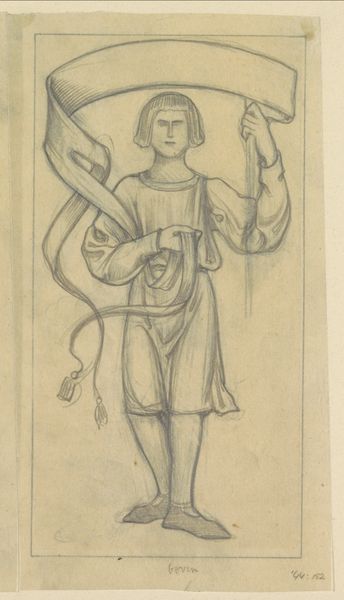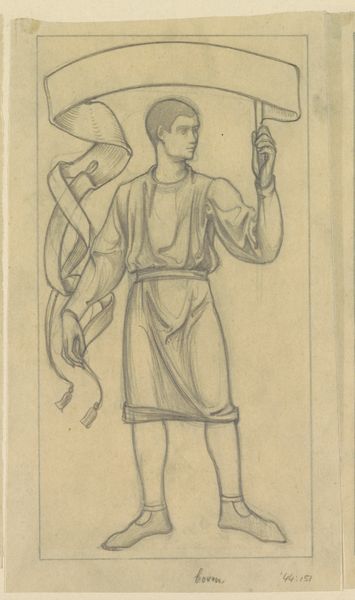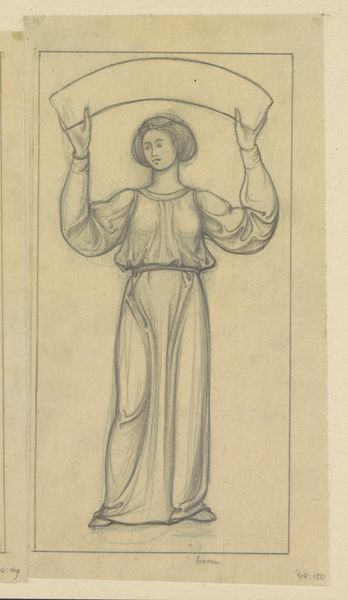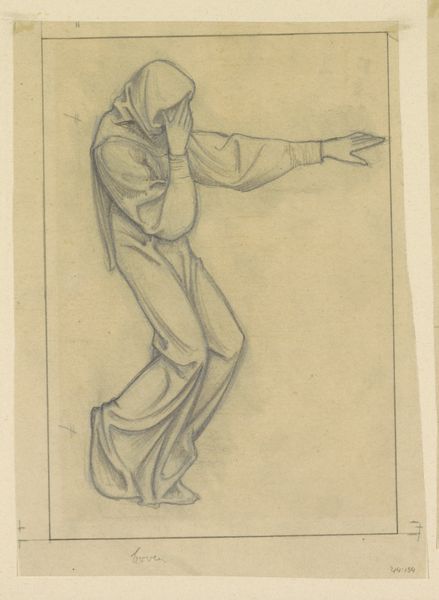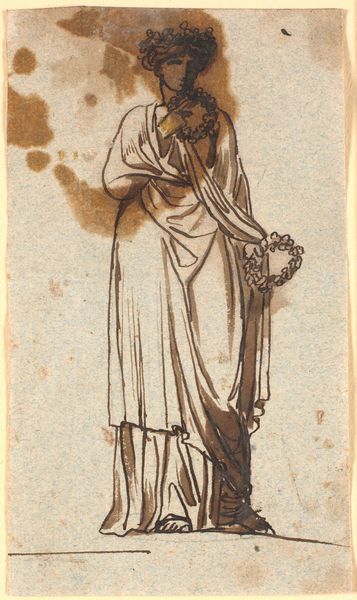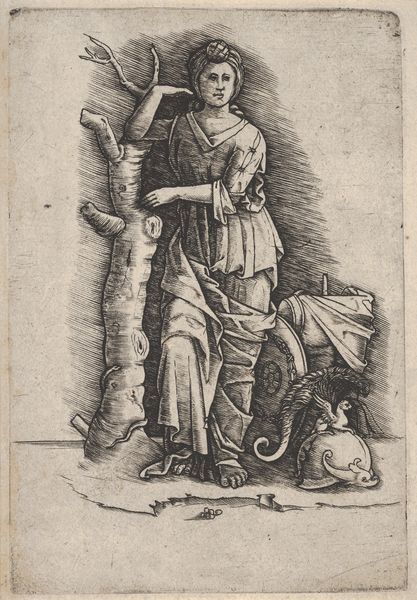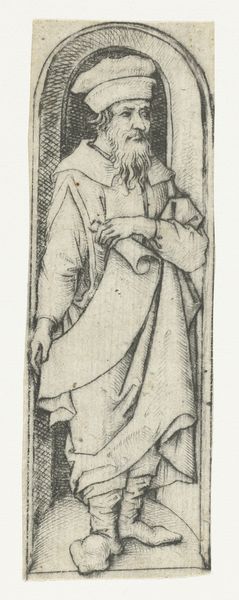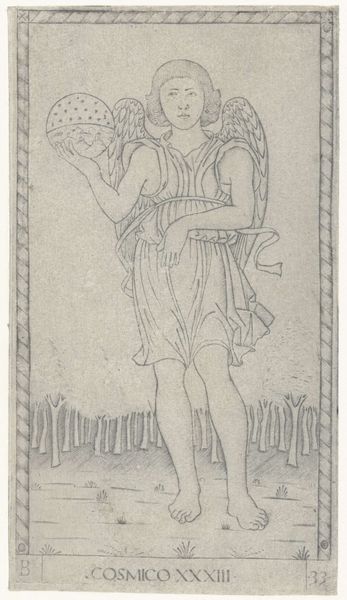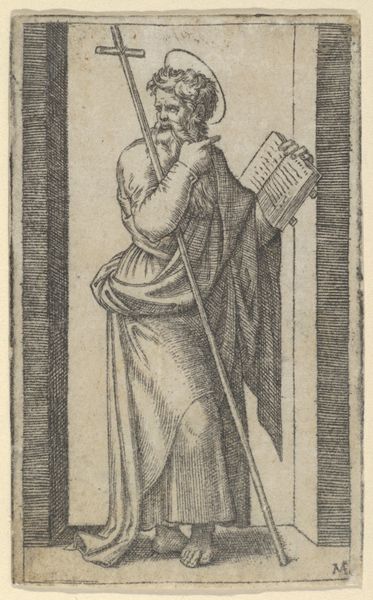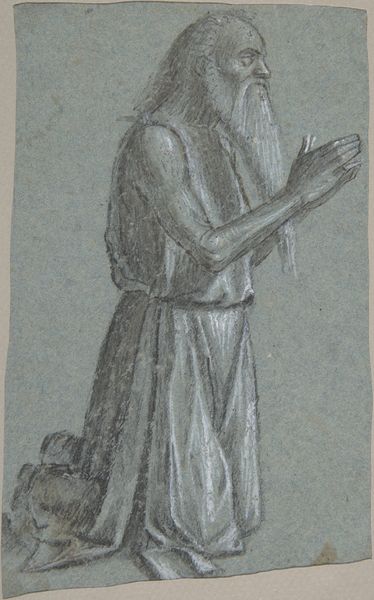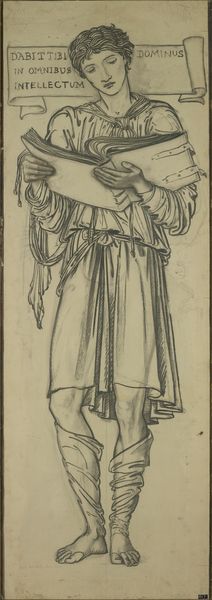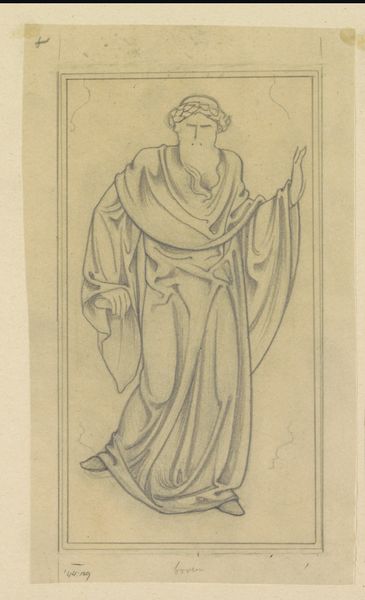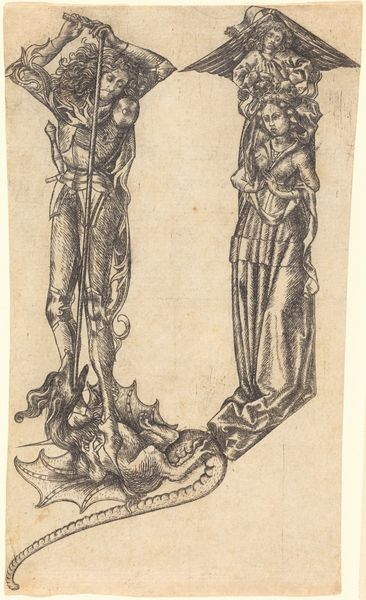
Ontwerp voor wandschildering in de Beurs van Berlage: staande jonge man met banderol 1869 - 1925
0:00
0:00
drawing, paper, pencil
#
portrait
#
drawing
#
light pencil work
#
shading to add clarity
#
cartoon sketch
#
figuration
#
paper
#
personal sketchbook
#
ink drawing experimentation
#
pen-ink sketch
#
pencil
#
limited contrast and shading
#
line
#
sketchbook drawing
#
sketchbook art
#
initial sketch
Dimensions: height 240 mm, width 128 mm
Copyright: Rijks Museum: Open Domain
Editor: This is "Ontwerp voor wandschildering in de Beurs van Berlage: staande jonge man met banderol," a pencil and paper drawing by Antoon Derkinderen, likely created sometime between 1869 and 1925. It seems to be a preliminary sketch for a mural, and it gives off a really classical, almost medieval, vibe. What stands out to you about this piece? Curator: What I see is an exploration of power dynamics inherent in representation. The young man, holding what appears to be a blank banner, becomes a vessel for projected meaning. How might the original intended message of this mural interact—or perhaps conflict—with contemporary understandings of identity and representation? Editor: That's an interesting point. I was focusing more on the historical context of the drawing itself, but I see what you mean. It is easy to make assumptions about what message someone wanted to convey in the artwork. Do you see that impacting the way people view and understand the art itself? Curator: Absolutely. Consider the historical context of the Beurs van Berlage, a building intended to represent Dutch national identity at a time of significant social and political upheaval. How does this image of idealized youth reinforce or challenge existing power structures? Does the “youth” being idealized represent the white working class, and are those ideas compatible with present sensibilities? Editor: So, by leaving the banner blank, the artist invites the viewers to impose their own values and beliefs on the image and society in the moment, perpetuating social constructs on viewers even to this day? Curator: Precisely. The seemingly innocent image becomes a site of ideological contestation. What do you think we, as contemporary viewers, should be aware of when interpreting such a work? Editor: I think you've highlighted the importance of questioning the seemingly neutral or universal claims of historical art, especially with regard to gender, race, and class. Thanks for giving me a fresh perspective! Curator: And you've reminded me of the ongoing relevance of these historical pieces in our contemporary dialogues about representation and social justice.
Comments
No comments
Be the first to comment and join the conversation on the ultimate creative platform.
